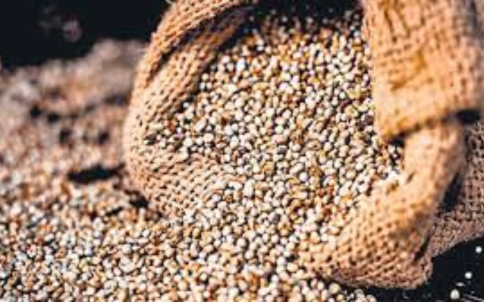Dr.M.Suresh Babu, President, Goutham Buddha FPO
The declining production of millet crops can be attributed to several factors:
It reinforces the importance of millets and highlights the reasons behind their declining cultivation in India.
India’s Millet Revolution is driven by growing awareness of the health and environmental benefits of millets, as well as efforts to revive traditional agricultural practices and support small-scale farmers. It is seen as a solution to the country’s dual challenges of improving public health and promoting sustainable agriculture. Indeed, India has a rich heritage of producing all the nine commonly known traditional millets, including Sorghum, Pearl Millet, Finger Millet, Foxtail Millet, Proso Millet, Little Millet, Barnyard Millet, Brown top Millet, and Kodo Millet. Millets have been a staple food in many regions of India, particularly for marginalized communities and small farmers, due to their resilience and adaptability to hot and drought-prone environments.
Also read: Why Nehru is relevant to Present Times?
The nutritional superiority of millets, characterized by higher protein levels and a more balanced amino acid profile compared to other food grains, is an important aspect. Additionally, millets contain various phytochemicals that offer therapeutic properties due to their anti-inflammatory and antioxidant attributes.
The Niti Aayog report rightly points out that despite the benefits of growing millets, there has been a gradual shift in cereal growing preferences among Indian farmers towards rice and wheat. This shift can be attributed to the promotion and focus on rice and wheat production, along with a lack of suitable initiatives and support for millet cultivation. As a result, the area under millet cultivation has been declining.
To reverse this trend and promote the cultivation of millets, it is crucial to raise awareness about the nutritional and environmental benefits of millets, as well as provide support and initiatives for farmers. This can include incentivizing millet cultivation through policies, creating market linkages and infrastructure, incorporating millets into government programs, and promoting the value and demand for millet-based products. By addressing these factors, India can revive millet production, benefit small farmers, and promote a more diverse and sustainable food system. Traditional farming systems, which often included millet cultivation, have been replaced by modern agricultural practices that prioritize high-yielding crops like rice, wheat, and maize. Millets have been neglected in favour of these crops due to various factors, including market demand, ease of cultivation, and government policies. As societies modernize and urbanize, dietary preferences and consumption patterns change. Millets, which were once staple foods in many regions, have been replaced by processed foods, refined grains, and other cereals. This shift in dietary preferences has resulted in reduced demand for millets and subsequently led to a decline in their production. Compared to major cereal crops, such as rice and wheat, millets have received relatively less attention in terms of research, development, and technological advancements. Limited investment in breeding programs, crop improvement, and agronomic practices for millets has hindered their productivity and competitiveness. Millets are generally more resilient to drought, heat, and other adverse weather conditions compared to other major cereals. However, climate change-induced shifts in temperature, rainfall patterns, and increased frequency of extreme weather events can still negatively impact millet production. Erratic rainfall, prolonged droughts, and heat waves can lead to crop failure and decreased yields. Inadequate storage facilities, processing units, and market linkages pose challenges for millet farmers. Limited infrastructure and market support result in lower profitability and discourage farmers from investing in millet cultivation.
Also read: Voter Awareness Campaign Rally at TKR Grounds
Addressing the decline in millet crop production requires concerted efforts from multiple stakeholders:
1. Research and development: Increased investment in research and development for millets can lead to the development of improved varieties that are more resilient, have higher yields, and meet consumer preferences. This includes efforts to enhance crop productivity, pest and disease management, and post-harvest technologies.
2. Awareness and promotion: Raising awareness about the nutritional benefits of millets and promoting their consumption can help create demand and increase market opportunities. Educating consumers about the versatility and health benefits of millets can drive consumer preference and support farmers in cultivating these crops.
3. Policy support: Governments can play a crucial role in supporting millet cultivation through policies that provide incentives, subsidies, and infrastructure development. Encouraging crop diversification, incorporating millets into government feeding programs, and promoting sustainable farming practices can contribute to revitalizing millet production.
4. Market development: Strengthening market linkages, improving value chains, and developing processing and storage infrastructure can enhance the marketability of millets. Providing market access and fair prices to farmers can incentivize increased production.
5. Knowledge sharing and capacity building: Facilitating knowledge exchange, training programs, and capacity building initiatives for farmers can equip them with the necessary skills and knowledge to cultivate millets effectively. This includes promoting best agronomic practices, water management techniques, and climate-smart farming methods.
By addressing these factors and implementing supportive measures, it is possible to reverse the declining trend in millet crop production and restore the importance of millets in sustainable agriculture and food systems.
Also read: Sensitive Personal data on toss





[…] Also read: Decline in production and consumption of millets […]